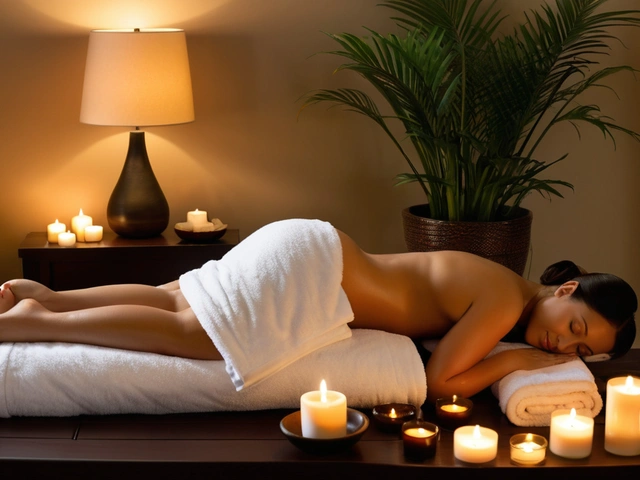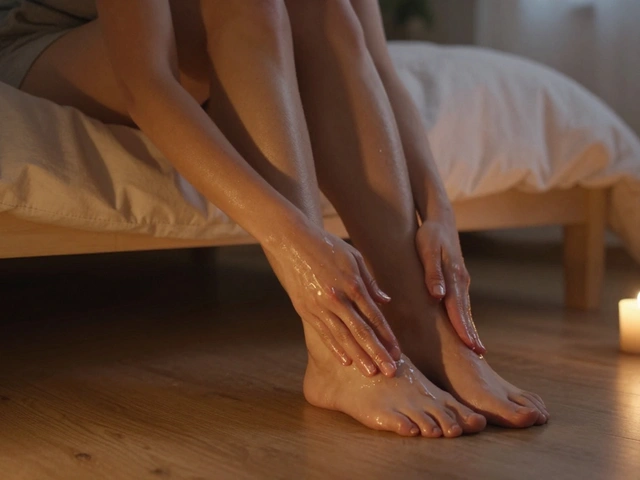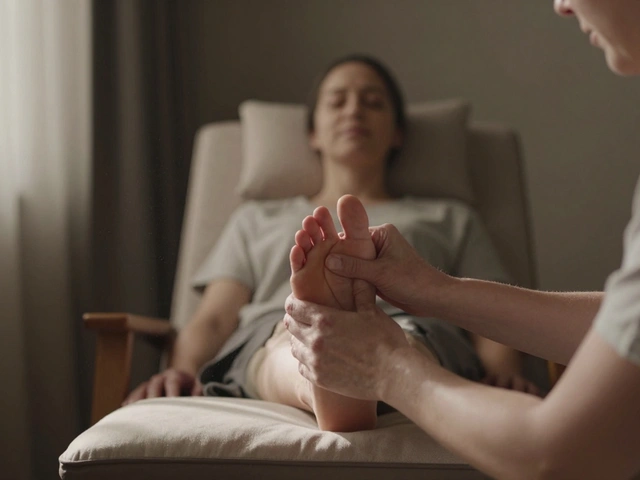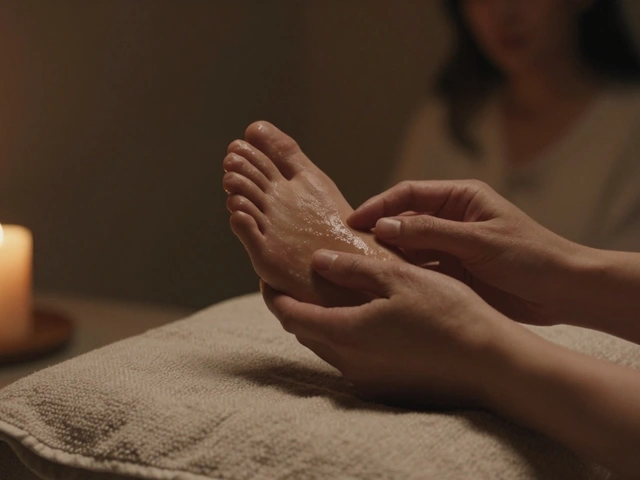You came here wondering how a “private dance with a masseuse” might feel-something intimate, embodied, maybe a little daring. Here’s the straight talk: if you’re booking a legitimate massage, sexual services are not on the menu. That doesn’t kill the vibe. Sensual discovery is still possible-through consent, movement, breath, and touch that stays within ethical, legal boundaries. This guide shows you how to explore that territory safely and respectfully, and how to choose the right setting in Perth to avoid awkward or risky situations.
TL;DR / Key takeaways
- Massage therapy is therapeutic and non-sexual. If you want sensual discovery, pair movement and breath with clear consent-not sexual services.
- Set boundaries upfront. Use simple language: what’s okay, what’s not, and what to do if anything feels off.
- Pick the right modality: massage therapy, dance/movement therapy, or sensuality coaching. Each has different rules and outcomes.
- Expectations matter. Arousal can happen; it isn’t an invitation to act. Breathe, self-regulate, and keep the agreements.
- In Perth, vet qualifications (e.g., Diploma of Remedial Massage), association membership, and a written code of ethics.
The reality behind “private dance with a masseuse”
The fantasy suggests candlelight, slow moves, and a massage that blurs into something else. Reality check: professional massage is bound by strict codes of ethics. In Australia, therapists who hold a Diploma of Remedial Massage (HLT52021) and belong to associations like Massage & Myotherapy Australia (MMA) or the Australian Natural Therapists Association (ANTA) must not provide sexual services. Reputable clinics put this in writing. If you hint at sexual extras, a pro will end the session. That’s how it should be.
So where does “sensual discovery” fit? Sensual doesn’t have to mean sexual. It can mean feeling your body more clearly-temperature, texture, stretch, breath, weight, rhythm-without crossing sexual boundaries. Think of it as tuning your senses. Touch can be soothing, grounding, and even beautiful without becoming sexual. The World Health Organization’s definition of sexual health includes consent, safety, and respect. Those are your north stars here.
What if arousal happens during bodywork? Bodies will body. It can occur with perfectly neutral touch. That doesn’t mean anyone is doing something wrong. It also isn’t a green light. Handle it like any other sensation: notice it, breathe, and return to your agreed focus. Plenty of research-Cochrane reviews on massage for pain and stress, plus randomized trials in complementary medicine journals-shows massage reduces anxiety and improves mood. None of that requires sexualized touch.
Jobs to be done (what you likely want next):
- Understand what’s ethical and legal in Perth.
- Find the right practitioner (or alternative service) for sensual exploration without crossing lines.
- Get a step-by-step plan to prepare, communicate, and navigate a session gracefully.
- Learn self-guided practices (movement, breath, self-massage) that feel intimate but safe.
- Know what to do if feelings get big: arousal, awkwardness, or emotional release.
Ethics, law, and choosing the right practitioner in Perth
Let’s make the guardrails explicit so you can relax into the experience.
Ethics you can expect from a legitimate provider:
- Clear scope: therapeutic, non-sexual touch only.
- Informed consent: you agree to techniques, areas touched, pressure, and draping; you can withdraw consent anytime.
- Professional boundaries: no sexual talk, no erotic touch, no double meanings.
- Privacy and draping: your body is covered except the area being worked.
- Hygiene and safety: sanitized room, fresh linens, clean equipment, non-irritant oils.
How this plays out in Perth:
- Qualifications: ask for the HLT52021 Diploma of Remedial Massage or equivalent for remedial work. Relaxation-only therapists may hold a Certificate IV, but many pros still have the diploma.
- Associations: MMA or ANTA membership usually requires insurance, first-aid, and a code of conduct.
- Health fund rebates: not required for sensual exploration, but they signal a clinic’s legitimacy.
- Local rules: councils can regulate “bodywork” premises. Sexual services, if legal in your area, are separate from massage therapy. Don’t conflate them.
Red flags (walk away):
- No intake form or medical questions.
- Vague answers about qualifications or insurance.
- Wink-wink language, “discretion,” or pressure to pay cash with no receipt.
- Poor draping, closed doors with no consent, or ignored boundaries.
Green flags (book with confidence):
- Transparent website with qualifications and a code of ethics.
- Intake and consent forms you actually read and sign.
- Clear talk about draping, pressure, and areas off-limits.
- Comfortable “no” culture-your therapist invites adjustments and respects them.
If your real interest is sensual discovery that includes movement or coaching, consider specialists adjacent to massage:
- Dance/movement therapists: focus on embodied awareness via guided movement.
- Somatic educators or sex educators (non-sexual touch): teach consent and body awareness without erotic touch.
- Tantra educators who emphasize breath and energy work over sexual contact. Vet them thoroughly.
| Modality | Primary Goal | Touch Allowed | Expectations | Best For |
|---|---|---|---|---|
| Massage Therapy (Remedial/Relaxation) | Pain relief, stress reduction | Non-sexual, professional, draped | Intake, consent, no erotic touch | Relaxation, body awareness, comfort |
| Dance/Movement Therapy | Emotional/embodied expression | Often minimal; movement-focused | Guided movement, consent check-ins | Sensuality via rhythm and presence |
| Somatic Coaching | Nervous system regulation | May be non-sexual, light touch or none | Consent-first, skills training | Boundaries, breath, noticing cues |
| Tantra Education (Non-sexual) | Breath, energy, intimacy skills | Non-erotic touch or none | Explicit agreements and rituals | Mindful, structured sensuality |
| Sexual Services | Sexual gratification | Sexual touch; separate industry | Not part of massage therapy | Not for therapy or clinical goals |

Step-by-step: planning a consent-first sensual discovery session
Here’s a practical flow that respects everyone involved and avoids crossed wires.
- Clarify your outcome (2 minutes): write one sentence you could say out loud. Example: “I want a relaxing, sensory-rich massage that helps me notice my body without sexual elements.” If you can’t say it clearly, you’re not ready to book.
- Choose the right service: if you want hands-on relaxation, pick a massage therapist. If you want movement-based sensuality, choose a dance/movement therapist or somatic coach. Don’t book a service hoping it becomes something else.
- Vetting (10 minutes): check quals, association membership, and ethics on the website. Read reviews for notes on professionalism and safety.
- Make contact: send a short message. Script: “Hi, I’m looking for a deeply relaxing session focused on body awareness and calming my nervous system. I’m not seeking sexual services. Is that within your scope?” Clear beats coy.
- Pre-session agreements: confirm duration, draping, areas to focus/avoid, pressure range, fragrance-free options, and how to communicate during the session (hand raise, safe word, or simple “yellow/red”).
- Arrival ritual (5 minutes): breathe in for 4, out for 6, repeat 10 cycles. Name three body sensations without judgment (warmth in chest, cool hands, slow breath). This trains your attention on sensation, not fantasy.
- During the session: if arousal or big feelings rise, breathe, ground your feet, and silently note “present.” If it distracts you, say, “Can we slow the pace?” or “Please switch to broader pressure.” Keep it clinical; avoid flirty language.
- Closure: ask for two minutes of quiet at the end to integrate. Roll slowly, sit, sip water. Notice the after-feel before you check your phone.
- Post-session note: jot down what felt good, what didn’t, and one adjustment for next time. Share it when you rebook.
Consent frameworks you can borrow:
- FRIES (Planned Parenthood): Freely given, Reversible, Informed, Enthusiastic, Specific.
- Stoplight system: Green (yes), Yellow (edge; proceed with care), Red (stop immediately). Agree on which areas and pressures are green, yellow, and red.
- CLEAR check-in: Check-in, Language (plain), Edges (what’s tender), Agreements (yes/no), Review (after).
Pressure and pace rule of thumb: if your breath shortens or you clench your jaw, ask to slow down or lighten up. If your mind drifts into fantasy, widen your focus to temperature, texture, and weight. That keeps the experience sensual, not sexual.
Practices you can try: movement, breath, and safe touch
Want the “private dance” vibe without crossing lines? Try these at home before or after a massage, or in a session with a non-sexual coach who’s comfortable with guided movement.
Micro-dance for embodied awareness (5 minutes):
- Pick one track you love at low volume.
- Stand barefoot. Unlock knees. Think swaying seaweed, not TikTok routine.
- Move only your ribs for 60 seconds, then only your shoulders, then only your hips. Keep the moves tiny and slow.
- Breathe through your nose. Match exhale to the longest phrase of the song.
- Pause. Feel your skin, temperature, and contact with the floor. That’s sensuality: noticing, not chasing.
Calm arousal without shame (2 minutes):
- Four-square breath: inhale 4, hold 4, exhale 4, hold 4, repeat 8 cycles.
- Widen attention to calves, forearms, and the air on your face. Sensation spreads; urgency fades.
- Say (silently), “Noticing is okay. Acting isn’t needed.”
Self-massage sequence (8-10 minutes):
- Face and scalp: fingertip circles at temples, behind ears, scalp tug (gentle).
- Neck and shoulders: long strokes from base of skull to tops of shoulders.
- Forearms and hands: squeeze-and-release down to each finger.
- Calves and feet: knuckle circles along the arch; thumb press between toes.
- Finish with a towel wrap and three slow breaths.
Partner-safe alternative (consent ritual, 5 minutes):
- Each person names three green areas and one red area.
- Agree on a 10-minute timer, oil amount, and pressure words: light/medium/firm.
- Give for 5 minutes, switch for 5. The receiver can ask for changes; the giver doesn’t improvise. Keep it PG and attentive.
If emotions come up (it happens): shaking hands for 30 seconds, sighing out loud, or pressing your feet into the ground can help discharge energy. Research on somatic therapies suggests that gentle movement and breath help downshift the nervous system; you don’t need to “solve” the feeling in the moment.

FAQs, checklists, and next steps
Quick FAQs
- Is it okay to feel aroused during a professional massage? It can happen. Do nothing with it. Breathe. It’s not a cue to speak or act sexually.
- Can I ask for “sensual touch” at a clinic? Use precise, non-sexual language: “slow, broad, relaxing strokes,” “focus on breath and rhythm,” “no erotic touch.” If you use the word “sensual,” clarify you mean sensory, not sexual.
- What about lingerie or nudity? Not appropriate. You’ll be professionally draped. Ask about disposable underwear if you’re unsure.
- Will oils or music make it too intimate? Low lighting and music can be soothing. If anything feels suggestive, ask for brighter light or instrumental tracks.
- What should I do if a boundary is crossed? Say “Stop” or “Red” immediately. End the session. Document what happened. Report to the clinic and, if necessary, the therapist’s association or consumer protection agency.
Pre-session checklist (print this):
- My goal in one line (relaxation, body awareness, stress relief).
- Areas to focus vs avoid.
- Allergies or sensitivities (oils, scents).
- Consent language agreed (Green/Yellow/Red or CLEAR).
- Confirmation that no sexual services are expected or offered.
During-session reminders:
- Breathe slower than usual; lengthen the exhale.
- Ask for changes in plain words: “Softer,” “Slower,” “Broader.”
- Stay with sensation: temperature, texture, weight, pressure.
- Keep fantasies private; return to the body.
Aftercare checklist:
- Hydrate and eat something light.
- Short walk in fresh air; no heavy workouts for a few hours.
- Note what worked, what to adjust next time.
- If you feel emotionally raw, take a warm shower and journal for 10 minutes.
Decision help: which service do you actually want?
- If you want pain relief and deep calm: book a remedial or relaxation massage.
- If you want to feel sensual without touch: try a movement/dance session.
- If you want skills for consent and boundaries: seek somatic or intimacy coaching (non-sexual).
- If you want sexual services: that is a different industry. Don’t book a massage and hope it morphs. It won’t-and shouldn’t.
Evidence corner (why this works):
- Multiple randomized trials and systematic reviews report massage reduces anxiety and improves sleep quality compared to waitlist or light-touch controls (e.g., studies summarized in BMC Complementary Medicine and Cochrane over the past decade).
- Consent models like FRIES (Planned Parenthood) reduce boundary violations by making agreements explicit and reversible.
- Breath-led downregulation (longer exhale) activates parasympathetic pathways, reducing arousal intensity-documented across psychophysiology research.
Troubleshooting
- “I got turned on and panicked.” You didn’t fail. Slow your breath, widen your attention to neutral areas (forearms, shins), and let the sensation pass. If panic persists, ask for a pause or end the session kindly.
- “The therapist used language that felt flirty.” Name it. “Please keep the language professional.” If it continues, stop the session and report it.
- “I was disappointed it wasn’t more intimate.” You wanted a different service. Next time, choose movement therapy or non-sexual coaching designed for embodied sensuality.
- “I froze when something felt off.” Freezing is common. Prepare a script: “Pause, please.” Practice it out loud before the appointment.
What this looks like in Perth
Practical markers I look for when I book in my city: qualifications listed with the exact training package (HLT52021), association logos (MMA or ANTA), a clear consent statement on the booking page, draping policy, no euphemisms, and a straightforward intake form. Suburbs with plenty of reputable clinics-think CBD, Subiaco, Fremantle-tend to have clear websites and reception that answer boundary questions in plain English. If the answers get fuzzy, I choose somewhere else. Perth has no shortage of credible options.
The bigger point
If you’re seeking a journey of sensual discovery, don’t ask a therapist to become something they aren’t. Pick the right modality, agree on boundaries, and aim for presence, not performance. You’ll get that grounded, hum-in-your-bones feeling you wanted-and you’ll keep everyone safe, respected, and proud of the choices made.










